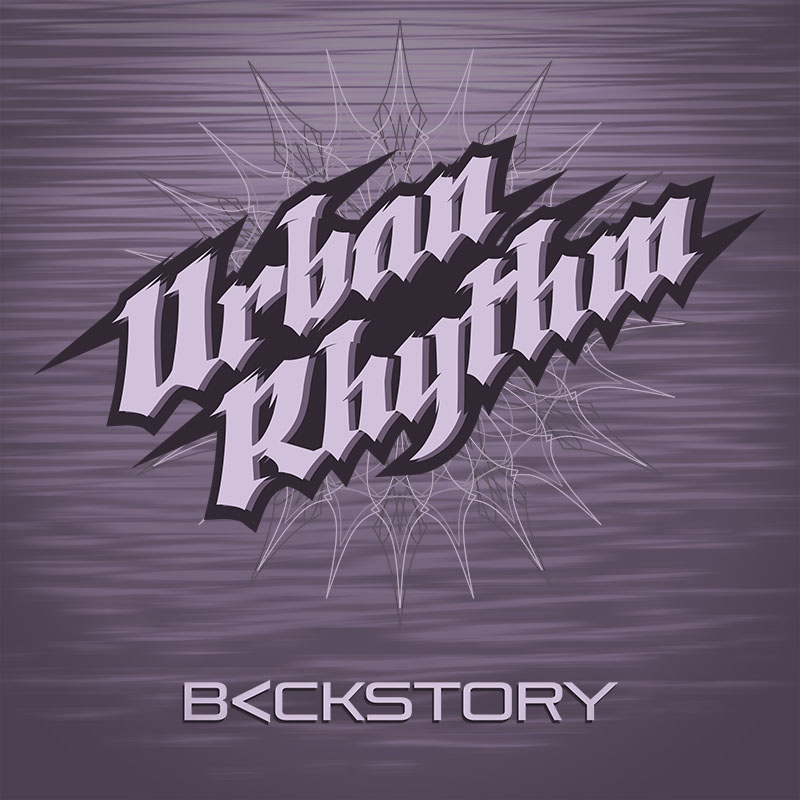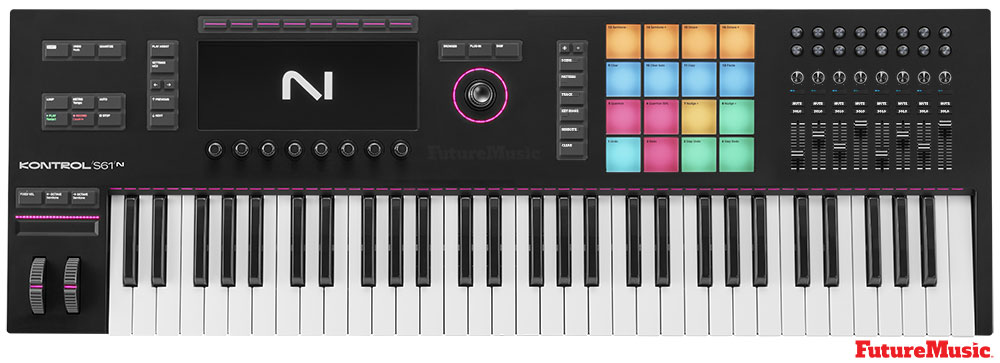Native Instruments Kontrol S-Series MK3 Keyboard Review
Long-Term Evaluation
Rather methodically, Native Instruments has created one the largest sound ecosystems available. Consisting of samples, loops, soft synths and innovative instruments, they now have dozens of offerings, spread over many genres, to satisfy a market that’s always looking for inspiration. One of the more difficult tasks NI has faced is bringing everything together under one cohesive umbrella. It certainly hasn’t been easy, and there’s been some setbacks (remember Kore?), but the German company has continued to forge ahead and break new ground.
FutureMusic originally thought that Maschine would be the One Product To Unite Them All when it debuted, but while Native Instruments provided the MPC-like controller and eventually the standalone Maschine+ – one of the best value propositions out there – with a ton of capability, the company believed a keyboard controller was the best solution. So in 2014, Native premiered the Kontrol S-Series of keyboards. They were notable for several reasons, including the Light Guide – small RGB LEDs above each key that evoked a 70s disco vibe – but there were some gripes. To make the entire Kontrol ecosystem work, Native had to develop a middleware solution to allow their software to communicate with the keyboards. In addition, some keyboardists were less than thrilled that NI decided to forgo the traditional Mod and Pitch wheels for touch strips, the rubber buttons sometimes didn’t always connect on the first try, there was some latency with the middleware, and others took issue with the price. That said, overall, Native achieved what they set out to accomplish and the integration was indeed a success.
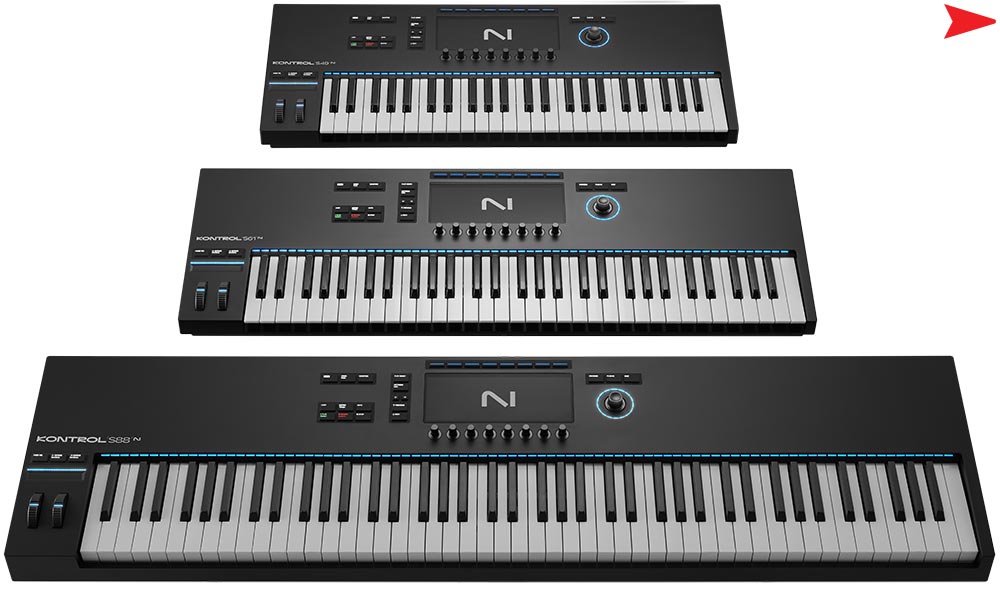

For a limited time only! Up to 80% off all Waves Bundles. PLUS click the banner above or the Go button for an additional 10%! This is Waves best deal yet! Get yours today before this special ends! Go!
Three years later, Native Instruments debuted the S-Series mk2 with evolutionary modifications based on user feedback and new technical advancements. The Light Guides went vertical, the Mod/Pitch touch strips were replaced with traditional wheels, a dualie color screen from Maschine appeared, sexy touch-sensitive encoders premiered and the layout was reconfigured. The Komplete Kontrol middleware remained, but went through some refinements to integrate NKS-supported instruments. Users were even more impressed with the build quality and FATAR-based keybeds in all three models.
For the third incarnation of the S-Series, the Kontrol keyboards have really come into their own…
For the third incarnation of the S-Series, the Kontrol keyboards have really come into their own. Again, Native made adroit, evolutionary modifications to the hardware that brings it up to speed with the latest tech, but what they achieved under the hood is what makes these new models truly sing. Let’s start with the hardware. The Light Guides went back to a horizontal orientation, which is much more aesthetically pleasing. The dual color screens were replaced with a 8.5″ x 3.5″ affair, which “looks gorgeous” but NI decided against a touch screen. We asked NI’s product team about this decision and it’s clear they gave it a lot of thought: “we evaluated and experimented with touch screens, but found that many such music hardware workflows ended up with more menu diving due to limited screen real estate and screen object size. We concluded that on balance a tactile experience is preferable. Tactile interfaces, specifically buttons and knobs, have a level of precision that is essential to our core customer. Physical buttons are always in the same place and provide reassuring haptic feedback, and turning knobs allows for a level of fine-tuning that is hard to replicate on a touch interface. In these situations, we found that touch often diminished rather than elevated the workflow experience. We did of course identify some upsides to touch screens particularly around browsing and some types of performance control. However, on balance we felt that the downsides ultimately outweighed the upsides.”
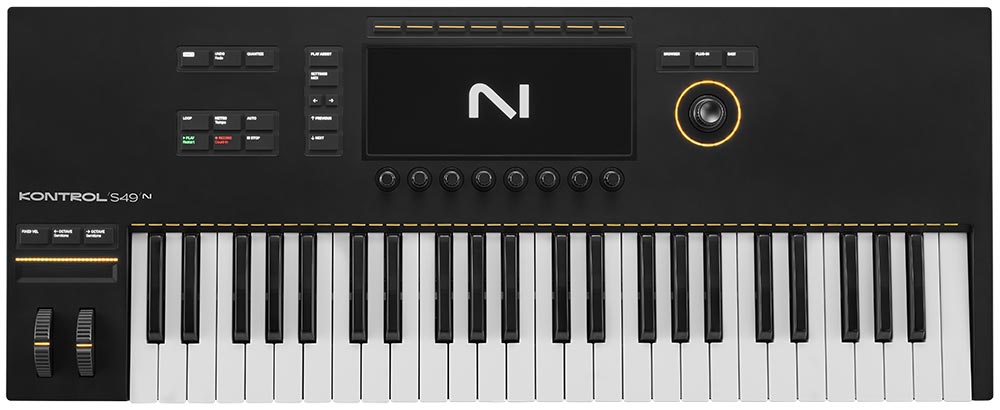
A “gorgeous” large color screen replaces the dual screens from the previous version
The eight, touch-sensitive encoders along the bottom of the screen return and are flanked along the top with eight buttons that feature an elegant new look. The joystick 4D encoder on the right side has been upgraded with a beefier feel, an aluminum build and a LED ring. The touch strip that was below the Mod/Pitch wheels has been relocated above. A change that most likely occurred from user feedback that complained the strip was getting inadvertently triggered when pulling back on either wheel.
What’s interesting is that the mk3 has shed some buttons. The mk2 had 31 buttons, not including the eight along the top of the screen, while the mk3 only has 21. This was certainly a pain point for three of our evaluators who found the dismissal of the Solo, Mute, Scene, Pattern, Track, Key Mode and Clear buttons a “poor decision” for those who utilized those dedicated buttons to speed their workflow with Maschine (more on this later). In addition, by eliminating the Mute and Solo buttons, and now having to use the 4D encoder, you cannot use the top buttons to quickly select a track.
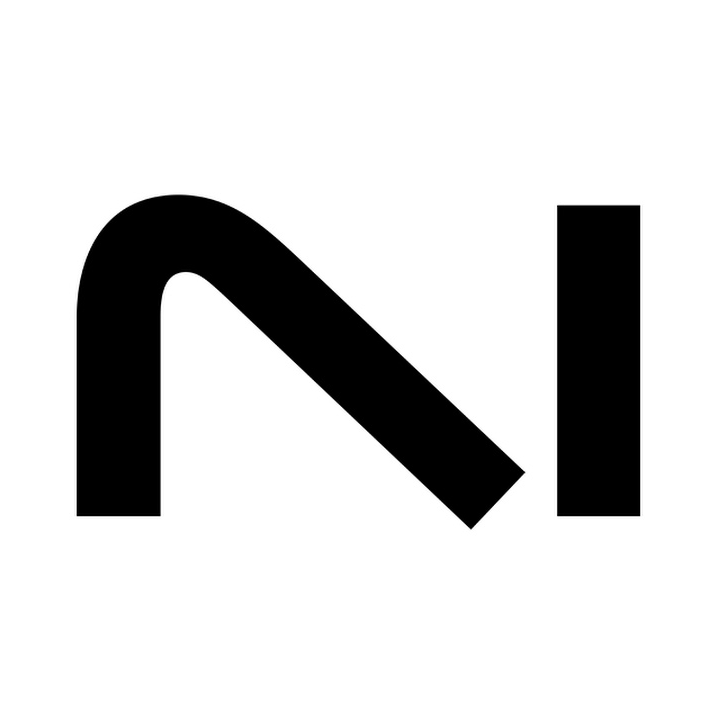
The encoder’s touch sensitivity is “instantaneous” and “feels like the future.”
,The top of the mk3 is now one single enclosure, instead of the mk2’s pieced together look. It’s a subtle tweak, but it gives the unit a much more refined look. Finally, the wonderful FATAR keybeds return, semi-weighted for the 49 and 61-key versions and fully weighted for the 88-key, but now feature polyphonic aftertouch for adding even more expression to a performance.
For this review, we employed five different evaluators to put the S-Series to the test – their impressions in quotes throughout this review. All five noted the “polished” and “seamless” user experience and how the system “was truly plug ‘n’ play.”
“It’s hard to put a finger on it, but it finally feels like the hardware and software are actually one product, instead of two,” relayed one evaluator.
This comment is indicative to every tester’s experience and is due to the extensive work Native’s engineers did on the backend, as well as adding processing power to the hardware instead of having the computer do all the heavy lifting. This allows the S-Series to perform some of the processing directly on the hardware, and communicate more efficiently with the NKS plug-ins. The combination helps to reduce latency and everything feels “punchy” and “instantaneous.” Even better, the large screen now includes even more visual information and a larger font size. NI auto-maps what the eight encoders control, but you can customize the interface to your workflow, to some extent, if desired.

Urban Rhythm Returns With Defining Album
Urban Rhythm has released Backstory, an exciting new album that demonstrates why he is the King of Acid ‘n’ Bass. Standouts include the huge hit, “Linus & Lucy”, Urban’s cover of the famous Peanuts theme song, as well as “Dead Pixel”. Check out out on all the major streaming platforms below:
Native Instruments Kontrol S-Series Keyboard mk3 Features:
- Large, color glass display for browsing, modulation & mixing
- Fatar Keybeds with polyphonic aftertouch as standard
- Metal-touch pitch and modulation wheels with central illumination
- Hardware/software integration with direct connection to Kontakt
- Integration with most major DAWs
- Precision tweaking for all your sounds, pre-mapped to key instrument and effect parameters
- Redesigned Light Guide pinpoints notes with a light above each key
- USB, MIDI, and bus-powered USB-C connectivity
- Inputs for four pedals: one sustain, one expression, and two assignable pedals
- Includes: Komplete 14 Select, Komplete Kontrol software, Stradivari Cello, Hypha, Guitar Rig LE, iZotope Elements Suite, & Ableton Live Lite
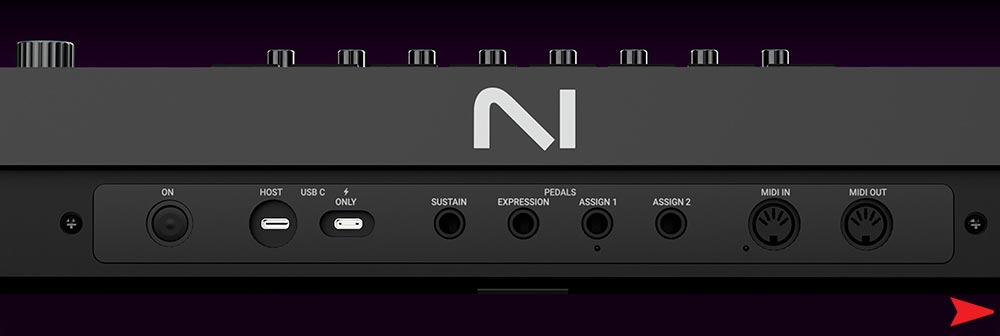
Rear view of the Native Instruments Kontrol S-Series Controller Keyboards mk3
NI Kontrol S-Series mk3 Specifications:
- High-resolution 1280 x 480 color screen with glass surface
- CNC machined aluminum, 8 x encoder caps, 1 x 4D encoder cap, 2 x wheels (pitch and mod)
- RGB illuminated pitch and mod wheels
- Kontrol S49: Height: 86 mm; Width: 802.2 mm; Depth: 323 mm; Weight: 5.5kg
- Kontrol S61: Height: 86 mm; Width: 967.4 mm; Depth: 323 mm; Weight: 6kg
- Kontrol S88: Height: 120 mm; Width: 1353 mm; Depth: 347mm; Weight: 13.5 kg
- Bus-powered USB-C
- USB MIDI
- USB-C ports: 1 for power / 1 for computer
- 4 x assignable TRS pedal inputs including a default sustain and default expression
- MIDI in and out via DIN Connections
- Supports: macOS (64-bit only): Stand-alone, VST3, AU, AAX / Windows (64-bit only): Stand-alone, VST3, AAX
- DAWs Supported:
- Ableton Live (11.3.11 or higher)
- Bitwig (5.0.10 or higher)
- Cubase
- Digital Performer (11.22 or higher)
- Logic Pro (10.6 or higher)
- Pro Tools (2023.12 or higher)
- Studio One (6.5 or higher)
- System requirements:
- MIDI 2.0 (requires MacOS 13.5 or higher)
- MIDI 1.0 (with MacOS 12 or higher)
- Intel Core i5, Apple M1 (and equivalent or higher)
- macOS 13 (Ventura) or higher
- Windows 10 or 11 (latest service pack) or higher
- 8 GB RAM
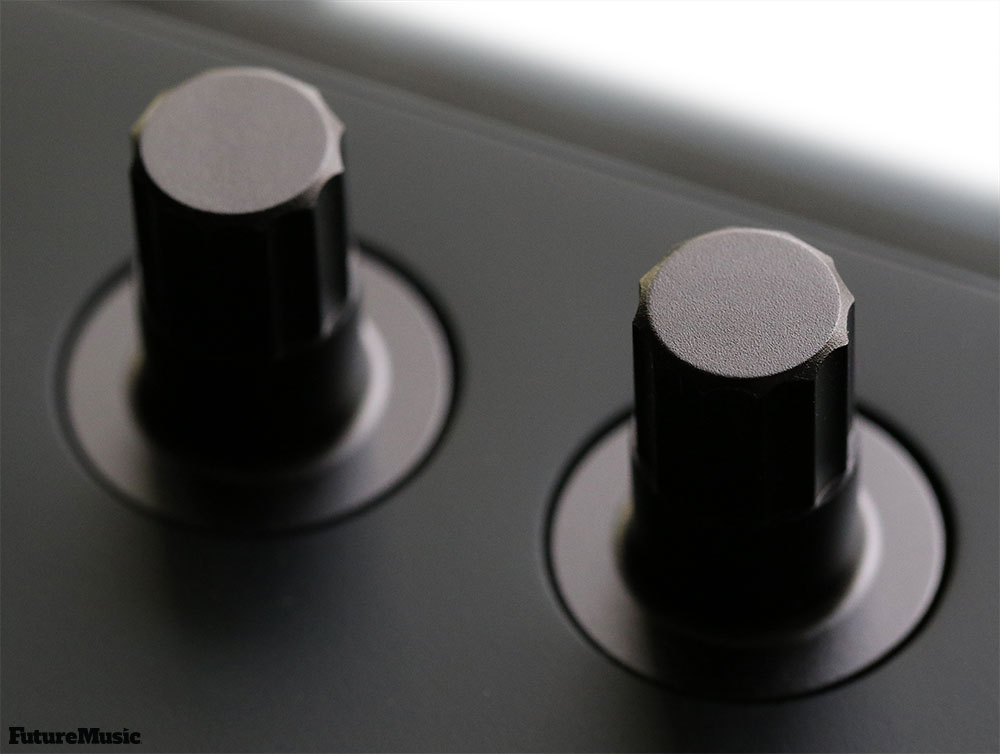

The easiest way for electronic musicians to get their music onto Spotify, Apple Music, iTunes, Amazon Music, Tidal, Instagram, Facebook, TikTok, Pandora, Twitch & much more! Click the banner above or the Go Button to save 7% off of your signup! Go!
The revamped backend really shines with the next-gen Native Kontrol Standard technology. NKS2 allows all compatible samples, soft synths, instruments, effects, and more to flow between all major Digital Audio Workstations and the S-Series mk3, eliminating the need to constantly look at a computer screen. This was especially impactful for our keyboardist who plays out live almost every week in a synth forward band. “The [Kontrol S-Series] mk3 allows me to drop my computer out of sight and focus solely on my keyboard…now I don’t have to respond to questions asking if I’m playing Fortnite.” In addition, the large, glass screen offers a clarity that can be seen even under harsh stage conditions. “I don’t know if NI was thinking of me when they redesigned the screen, but it’s very easy to read and strong enough to cut through bright spots and fill.”
Both our live performers and studio musicians liked the Light Guide. “I actually thought Native Instruments was going to get into the educational market when I first saw the LED lights, like Roli, but they’re actually very useful…for designating key zones” and conveying additional visual information. Native has expanded the functionality of the Light Guide with additional modes for non-virtuousos via Play Assist. First is the Chord Mode, that provides a vast number of chords to explore, each note highlighted by the Light Guide. In addition, Native provides the ability to play a chord progression by playing only the root note. Second, is Easy Mode that can take any scale and map it to only the white keys. One of our testers called this “Drummer mode.” The Arpeggiator options are more extensive, but one of our testers felt that certain attributes, such as Sequence, could be “more fully fleshed out.”
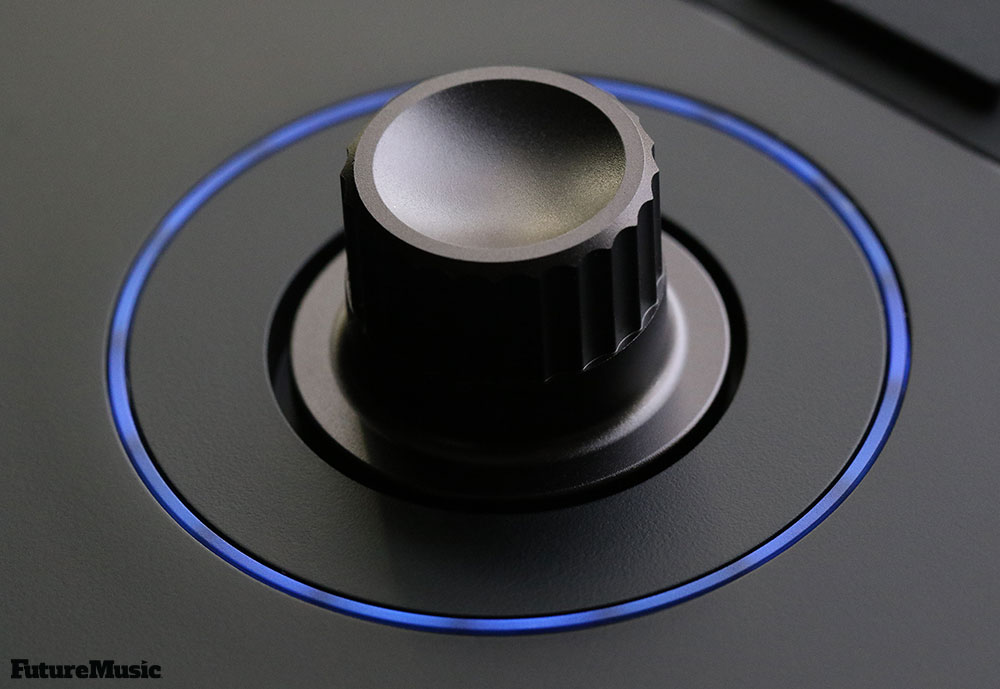
The S-Series all contain the same rear connectivity. Two USB-C inputs, one for standalone power and one for your computer, full-size MIDI DIN In and Out connections, and four TRS pedal inputs: Sustain, Expression, and two others that the user can assign to their liking. A power switch completes the rear panel. The aluminum Mod and Pitch wheels each contain a LED light to showcase the 50% setting. Our live performer felt they “could be a tad bigger” and that the Pitch wheel “wasn’t snappy enough.” That said, the wheels are customizable, so you can assign modulators such as filter, vibrato, etc. with ease. All liked the new touch strip location and it’s sensitivity, not to mention the “micro LED lights to denote tracking.” All of the buttons “have a positive click” to indicate a solid connection and the “aluminum encoders are solidly planted” with “a great tactile quality you don’t find on other controllers. The touch sensitivity is “instantaneous” and “feels like the future.”

The 800 lbs. gorilla in the Kontrol S-Series mk3 room is Maschine. There are some decisions that NI made regarding Maschine that are “head scratchers” and others where you can understand Native’s perspective. First, let’s get to the decision to forgo Maschine integration in the mk3. With Kontrol S mk2, Maschine mk3 and Maschine+ could be completely controlled by the keyboard and created a very nice two-pronged attack when composing. What’s curious is that you can access Kontakt 7 from Maschine in the Kontrol S mk3 and it integrates like the mk2 version, but that’s it. Worse, is that none of the transport controls or other DAW features can control Maschine in any of the Kontrol S-Series mk3 keyboards.
Why the lack of Maschine functionality? “Simply put,” according to Native Instruments’ Matt Hines, Associate Director of Product, Hardware, “this was an extremely high effort development that bore little fruit. Very few people adopted and used the integration, which was really unfortunate. As such, when it came time to develop the next generation tech stack underpinning Kontrol S MK3 and the other forthcoming features or products, this integration was deprioritized in favor of features used by an overwhelming majority.” Interestingly enough, this is why our reviewers found that Kontakt 7 did work with Kontrol S mk3’s.
“Kontakt already accounted for two-thirds of the content used with our keyboards,” Hines explains, “and so to implement direct connection was an obvious benefit to many.” So will there ever be the same type of Maschine integration we saw in the mk2 keyboards? “We might implement a simpler version, such as the basic transport controls, but that’s further down our backlog,” Hines contends. “If it happens, it certainly wouldn’t be any earlier than late 2024.” Thus, the short answer is most likely no.
So if the Kontrol S mk3 doesn’t fully integrate, how come Native Instruments didn’t implement some of Maschine-like controls to the Kontrol S mk3 keyboards to enable them to compete with products from Arturia, Novation and Akai? Even just adding eight of Maschine+’s excellent pads would have opened up some interesting possibilities. We posed this to the Kontrol S mk3 product team:
“Our extensive research exposed a passionate (seriously passionate!) split between customers who want pads and customers who don’t. These two groups are not only divided by the ‘pads-yes/no’ question, but are typically trying to solve for different problems. Although overlapping to some extent, they ultimately have several unique workflow needs and trying to cover all of these would have diluted our focus.
The ‘no pads’ group expressed a clear preference for bringing virtual instruments to life via a keyboard-only interface. This group is larger (at least amongst our core customer group), and the unique NI and NKS ecosystem is the perfect jumping off point to solve for their needs.
Additionally, composers using the S88 in particular regularly expressed that they not only want, but need, the space on top of the S88 for both general peripherals (computer keyboard, trackpad, etc) and peripherals that are specific to their workflow (tablets, faders, pads). We saw divergent needs and preferences for specific fader boxes and pad types / configurations, and it therefore made more sense for us to accommodate this than force duplication or a particular fader / pad type.
None of this means that we will never create a keyboard with pads. If we do, we will make the space to create something that is truly meaningful in the pads-plus-keys context. It is worth noting that Maschine is a completely different product (a groovebox) that focuses on a completely different need. At the same time it is naturally our benchmark for pad quality.
Kontrol MK3 has a clear point of view and that means that it is not for everyone, just as it would not be for everyone if it had pads. There are so many choices to cover different controller keyboard needs including some great (but very different) options from NKS partners and friends – that can only ever be a good thing!”
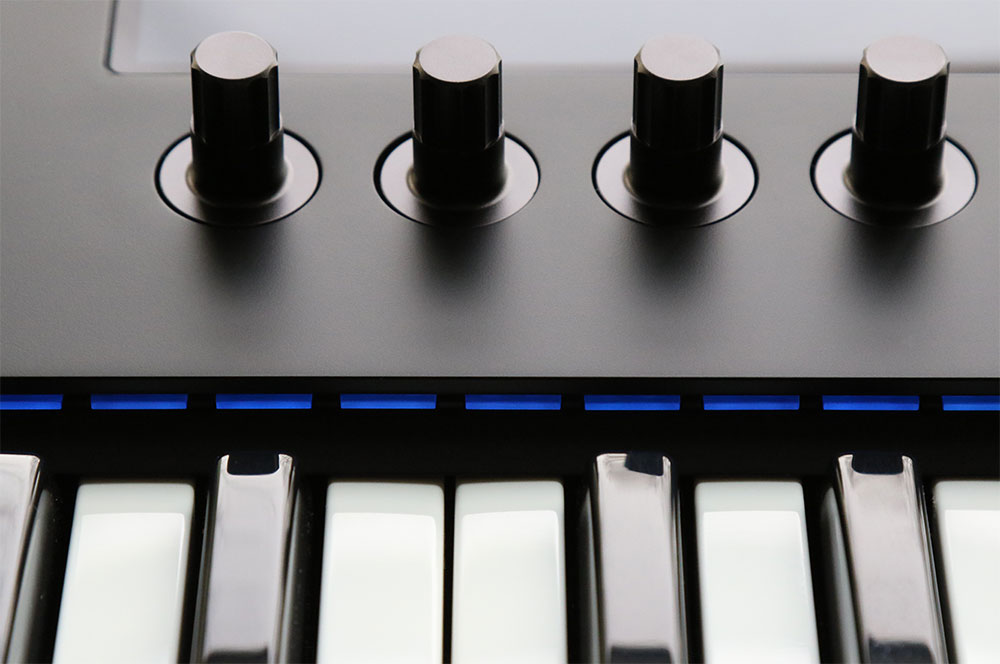
From this perspective, the decision to not include some of Maschine’s features, as well as eliminate ten of the Kontrol S mk2’s buttons seems valid, but it will leave some users disappointed. We understand that the weighted S88 market probably wouldn’t appreciate the additional Maschine features, but we would have loved to see at least the S49 with additional attributes, including the Maschine’s pads. “The braintrust at Native Instruments is clearly way smarter than I am, but I definitely think it’s a missed opportunity to not at least to try and own the high-end controller market by creating a Kontrol S keyboard that kills on all fronts,” reflected one reviewer.
Conclusion
For keyboardists who are neck deep in Native Instruments’ sonic ecosystem, the third incarnation of the Kontrol S Series of controller keyboards may be precisely what they have been waiting for – an elegant, seamless interface to record their inspiration. While the new large screen, grouping options, onboard processing, optimized backend, polyphonic aftertouch, and the full implementation of Kontakt 7, are certainly compelling enhancements to get current owners to upgrade, it’s the ease-of-use and “don’t make me think” approach that will garner new fans. With that in mind, Native clearly achieved what they set out to accomplish with the mk3 versions. Highly Recommended.
Native Kontrol S-Series Controller Keyboards mk3 Rating: 92%
Cheers:
+ NKS2
+ Build Quality
+ Ease-Of-Use
+ Polyphonic Aftertouch
+ 4D & Touch Controls
+ Light Guide
+ Connectivity
+ Large Glass Screen
+ Komplete 14 Select Included
Jeers:
– Maschine Integration Dropped
– Loss Of Mute/Solo Buttons
– DAW Integration
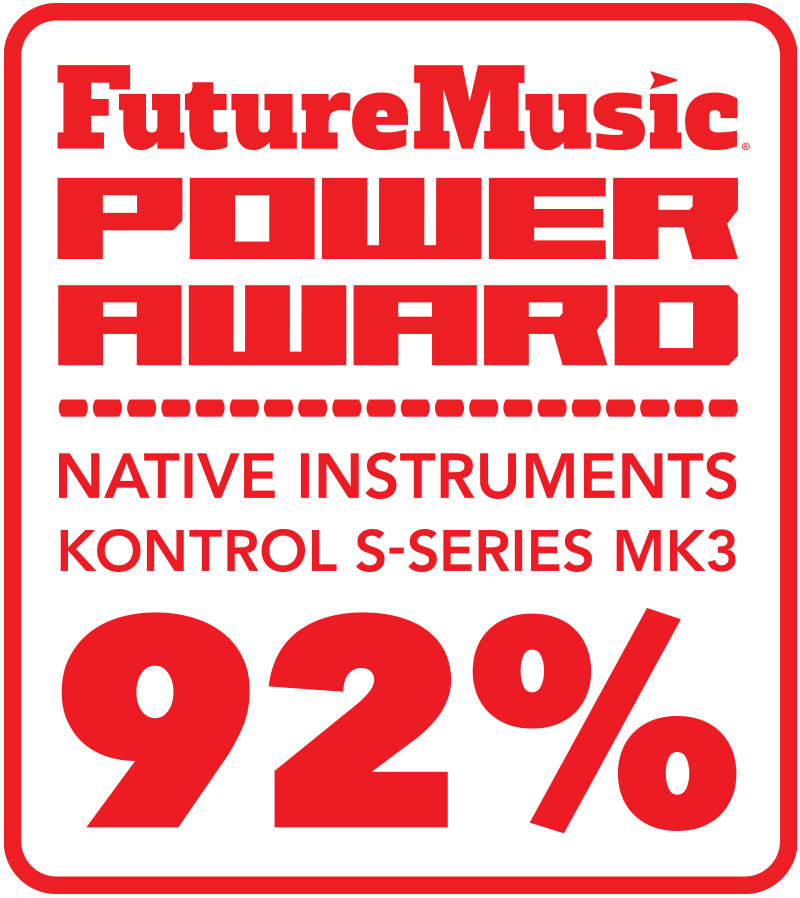
Native Instruments Kontrol S49, S61 and S88 mk3 cost $/€749, $/€849 and $/€1299 respectively.
The Future: Although the Kontrol S-Series Controller Keyboards mk3 will have its detractors as a limited controller, it has made significant strides on several fronts, echoing Apple’s hardware and software approach. We understand the amount of effort, energy and resources that go into developing a product of this nature, but we still can’t help to wonder if NI can develop the One Controller To Rule Them All.
A controller that not only can take full advantage of Native’s seamless NKS technology and the incredible build-quality, but also expand those attributes into a flexible and versatile platform.

